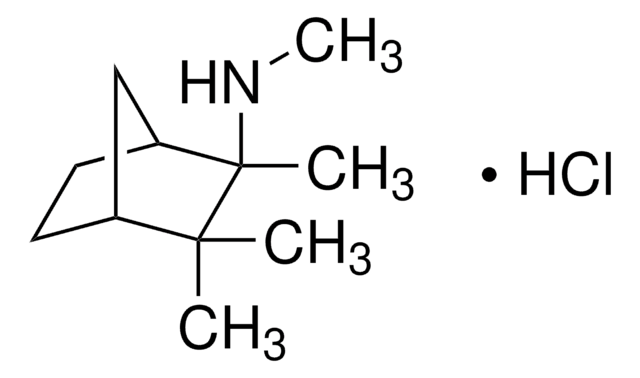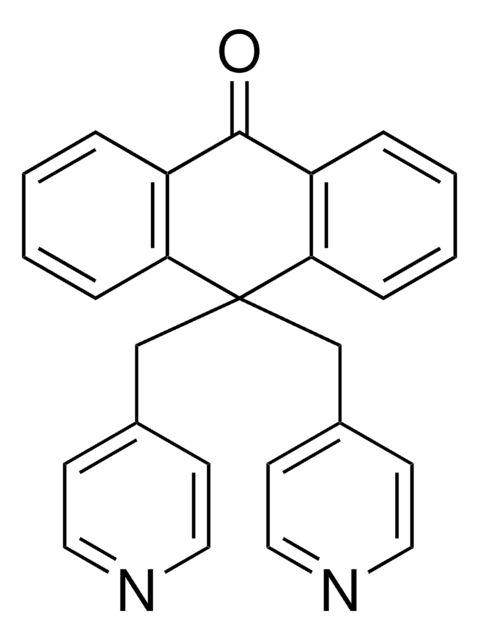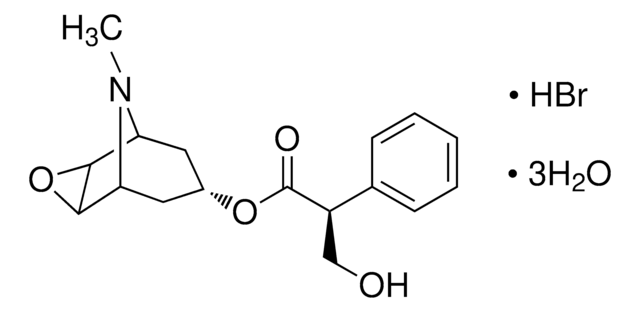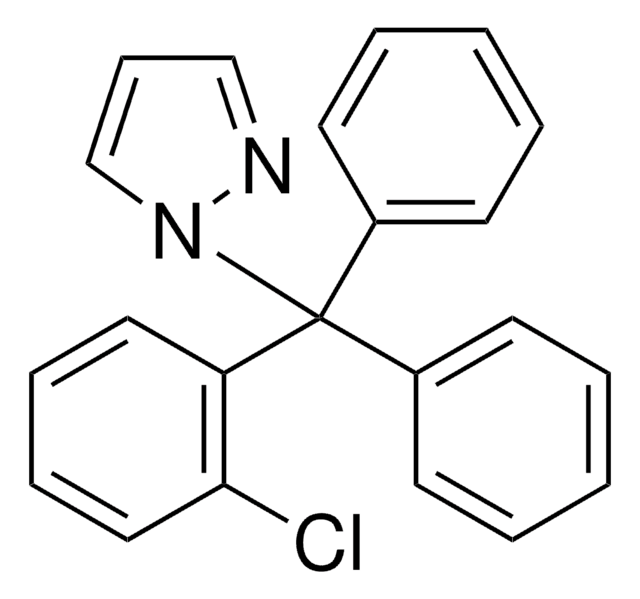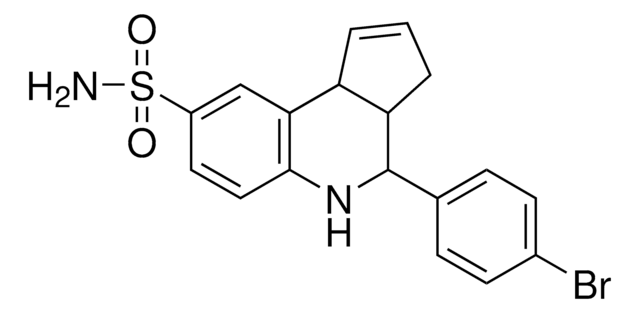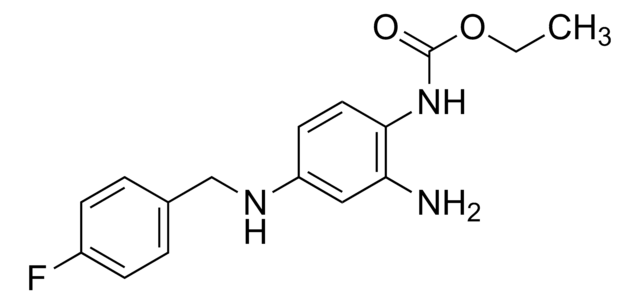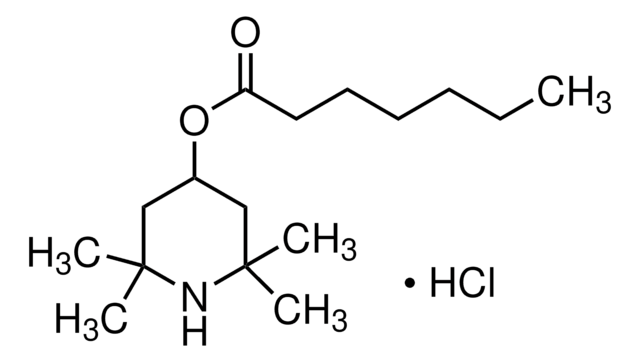L134
Linopirdine
≥98% (HPLC)
Sinónimos:
1,3-Dihydro-1-phenyl-3,3-bis(4-pyridinylmethyl)-2H-indol-2-one, DuP 996
About This Item
Productos recomendados
Nivel de calidad
Ensayo
≥98% (HPLC)
color
white to off-white
solubilidad
DMSO: >10 mg/mL
ethanol: 240 mg/mL
cadena SMILES
O=C1N(c2ccccc2)c3ccccc3C1(Cc4ccncc4)Cc5ccncc5
InChI
1S/C26H21N3O/c30-25-26(18-20-10-14-27-15-11-20,19-21-12-16-28-17-13-21)23-8-4-5-9-24(23)29(25)22-6-2-1-3-7-22/h1-17H,18-19H2
Clave InChI
YEJCDKJIEMIWRQ-UHFFFAOYSA-N
Información sobre el gen
rat ... Kcnj1(24521)
Descripción general
Acciones bioquímicas o fisiológicas
Información legal
Código de clase de almacenamiento
11 - Combustible Solids
Clase de riesgo para el agua (WGK)
WGK 3
Punto de inflamabilidad (°F)
Not applicable
Punto de inflamabilidad (°C)
Not applicable
Equipo de protección personal
Eyeshields, Gloves, type N95 (US)
Elija entre una de las versiones más recientes:
¿Ya tiene este producto?
Encuentre la documentación para los productos que ha comprado recientemente en la Biblioteca de documentos.
Nuestro equipo de científicos tiene experiencia en todas las áreas de investigación: Ciencias de la vida, Ciencia de los materiales, Síntesis química, Cromatografía, Analítica y muchas otras.
Póngase en contacto con el Servicio técnico